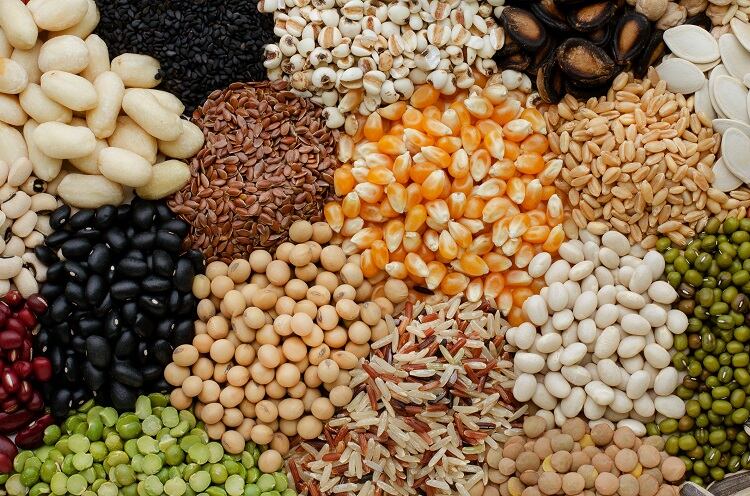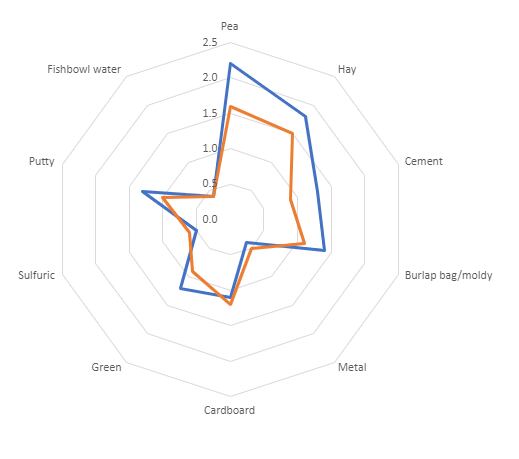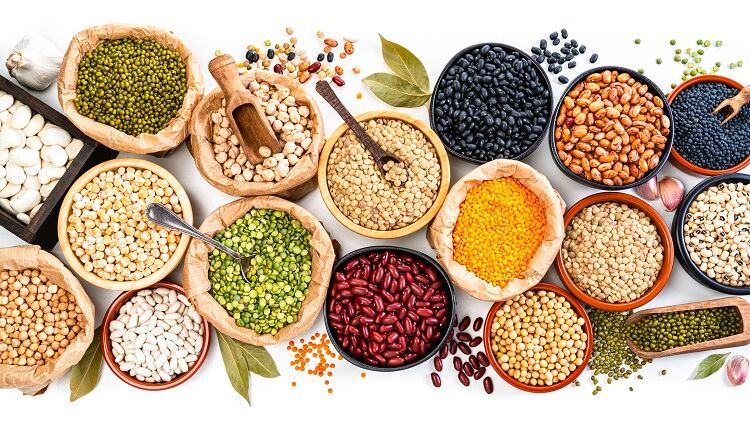Plant-based products are a multi-billion-dollar global industry. As the market continues to grow, manufacturers are looking for ways to improve the appeal of these vegan foods.
Plant protein ingredients clearly have an important role to play. But unlocking their potential can be quite complex.
René Floris, Food Research Division Manager at NIZO and member of the FoodNavigator advisory panel, asks Wim Engels, Senior Project Manager, and Herwig Bachmann, Expertise Group Leader Fermentation - both from NIZO - how bio-purification can help to improve the quality and usability of plant-based proteins, by reducing off-flavours, components that negatively affect taste and anti-nutritional compounds.
René Floris: Why is adding plant protein to vegan foods complicated for manufacturers?
Wim Engels: Manufacturers need to deliver plant-based protein ingredients and applications that are tasty, healthy, stable, safe and sustainable. However, the plant protein universe is much more diverse than the animal protein universe, and each plant protein behaves in a different way. This means manufacturers have a lot of options, for example if they want to add a plant protein that delivers a certain nutritional value or texture benefit. But plant proteins can also have negative characteristics: many have an ‘off-flavour’ that consumers don’t like. And some contain anti-nutritional compounds that can reduce the digestibility of proteins or the bioavailability of amino acids, for example. This means the consumer can’t fully benefit from the nutrients in the product.

RF: How can we get rid of the off-flavours or anti-nutritional factors in plant proteins?
Herwig Bachmann: Off-flavours and antinutritional factors can be caused by unwanted molecules in the plant protein ingredient. Volatile compounds like aldehydes, alcohols and ketones are common causes of off-flavours, while non-volatile compounds such as polyphenols, phytic acid and saponins can be antinutritional factors or have a negative effect on taste.
You can reduce these compounds with physical/chemical techniques such as dehulling, washing, boiling, filtering, germinating seeds, etc. But these can’t eliminate the compounds completely, and may damage the plant protein. Fermentation, on the other hand, uses living organisms, such as bacteria or yeasts, to degrade the unwanted compounds. But it can add flavours of its own to the plant protein ingredient. Bio-purification, however, degrades the unwanted molecules, without adding fermentation end products.
RF: What is the difference between bio-purification and fermentation?
WE: Bio-purification uses the proven techniques of fermentation, without actually “fermenting” the protein isolate, to deliver a neutral-tasting and smelling ingredient. Both use living organisms to eliminate the unwanted molecules through enzymatic conversion. But unlike fermentation, with bio-purification, we don’t allow the bacteria to grow in numbers. Instead, we use the metabolic activity of the microbes to degrade specific, undesired molecules, while strictly limiting side activities, such as product acidification.
RF: How do you know that bio-purification works?
HB: The concept of using bacteria to eliminate specific molecules is already proven in non-food industries, such as environmental microbiology. In a process called bioremediation, bacteria are added to soil or water to consume or convert toxic chemicals, for example from oil spills or ground pollution. But we also took inspiration from the dairy industry, specifically the use of adjunct cultures in cheese. These are bacteria that add flavour by producing enzymes, but don’t contribute much to the actual production of lactic acid. With bio-purification, we want to do something similar: stimulate enzymatic activity, without fermenting.
NIZO has been researching whether bio-purification can work for plant proteins for several years, both on our own and as part of the “Bio-purification of plant proteins” TKI (Top consortium for Knowledge and Innovation). We have also used the knowledge gained through our extensive history with dairy and our large collection of strains for fermentation. Our research has shown that it is possible to use yeast and bacterial strains to reduce unwanted molecules in plant proteins, with limited production of lactic acid or alcohol. Furthermore, bio-purification works for both volatile and non-volatile molecules. In fact, we have nearly ‘solved’ the problem of aldehydes using bio-purification. In another example, we conducted a comparative sensory analysis of bio-purified and non-bio-purified pea proteins in a beverage. The bio-purified pea protein scored lower for a number of common ‘off-flavours’.

RF: What are the challenges of using bio-purification?
HB: The concept of bio-purification is quite simple; in practice, however, it is very complex. There is no one bacterium or yeast that works for all molecules in all plant protein substrates. You have to match the right strain in the right substrate for the right molecule. We created a matrix with 130 microbial strains and 4 substrates, and scored each strain on how well it removed specific molecules in each substrate. What we found is that no single strain was a ‘top performer’ across the matrix. However, there are optimal strain/substrate combinations. You just have to find them.
There are also other challenges to address. For example, for certain compounds or compound classes, we see indications that microbial degradations are possible, but we still need to understand the underlying biochemical reactions involved, to further improve bio-purification.
RF: How do you select a strain that will eliminate a specific molecule in a specific substrate?
HB: It takes a lot of expertise and knowledge, both of the fermenting strains and of the plant protein substrates. You can end up with unexpected results: for instance, if you remove one specific compound, this could lead to another, previously unnoticed compound becoming dominant in a sensory profile. Then you need to address that impact.
Besides laboratory experiments, there are other ways to screen for strains offering the potential to remove unwanted molecules. We are currently working on identifying functionality within bacterial DNA profiles so we can better predict their traits. Such ‘in silico’ activities should enable us to select strains that are the most promising for further exploration. Artificial intelligence will play a key role here: we are developing machine learning to predict individual enzymes that degrade particular compounds. However, there is still a lot to be done to unravel the actual enzymatic activities. Also, the presence of a gene doesn’t mean it is expressed, so you still need to test, measure and analyse to be sure the strain is acting appropriately within that substrate. And you still need to understand the final application to make sure you have the right match.
RF: What are the next steps for bio-purification?
HB: First of all, we are significantly expanding our extensive NIZO culture collection to catch a broader functional diversity. The current collection already includes both dairy- and plant isolated strains. The new additions are mostly from wild, plant-based fermentations.
We are also well on our way with finding ways to combine multiple strains, to eliminate more than one undesirable molecule in a plant protein substrate at the same time. It’s complex, because the strains are living organisms that don’t just interact with the molecules, but also with each other and their environment. So it adds another layer of complexity to creating ‘matches’. However, we’ve seen promising results with this. Looking forward, we can foresee very tailored situations where we can move from creating a ‘neutral’ plant protein, to one which perhaps replaces an off-flavour with a specific, desired flavour, all by eliminating or producing molecules of interest. The possibilities are endless!
In our next article, we will look at new developments for faster and reliable detection of unwanted microbes.

